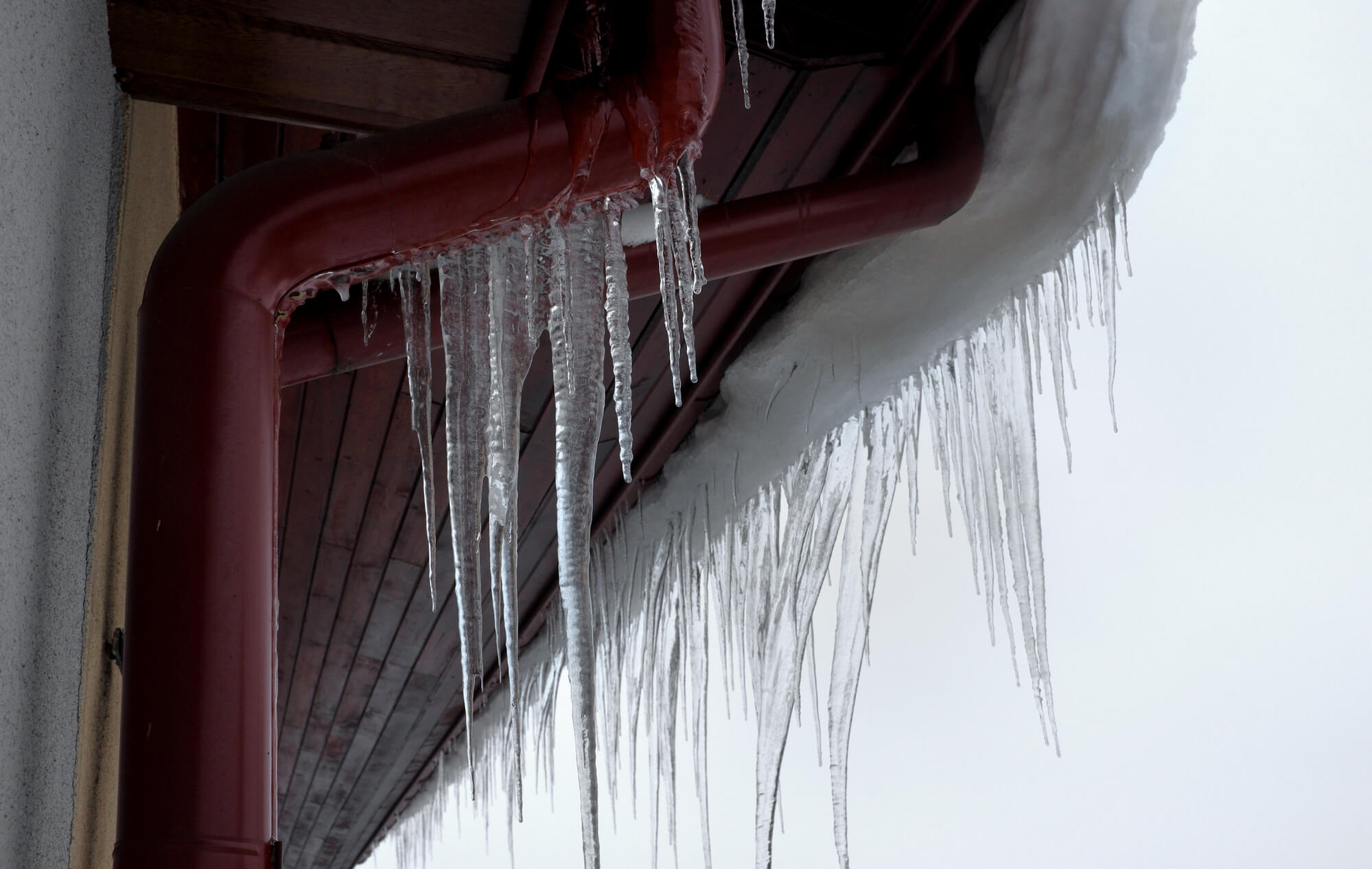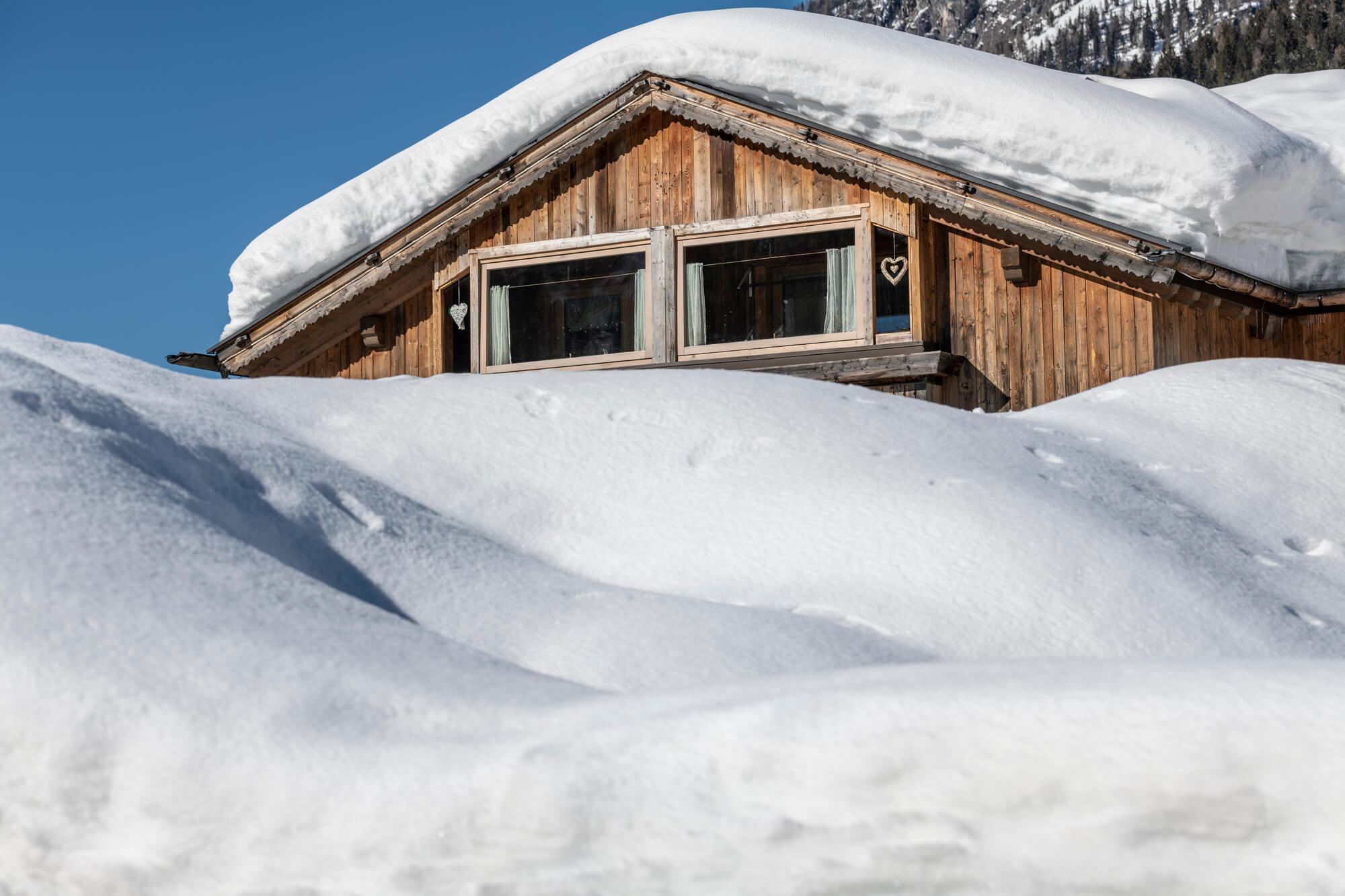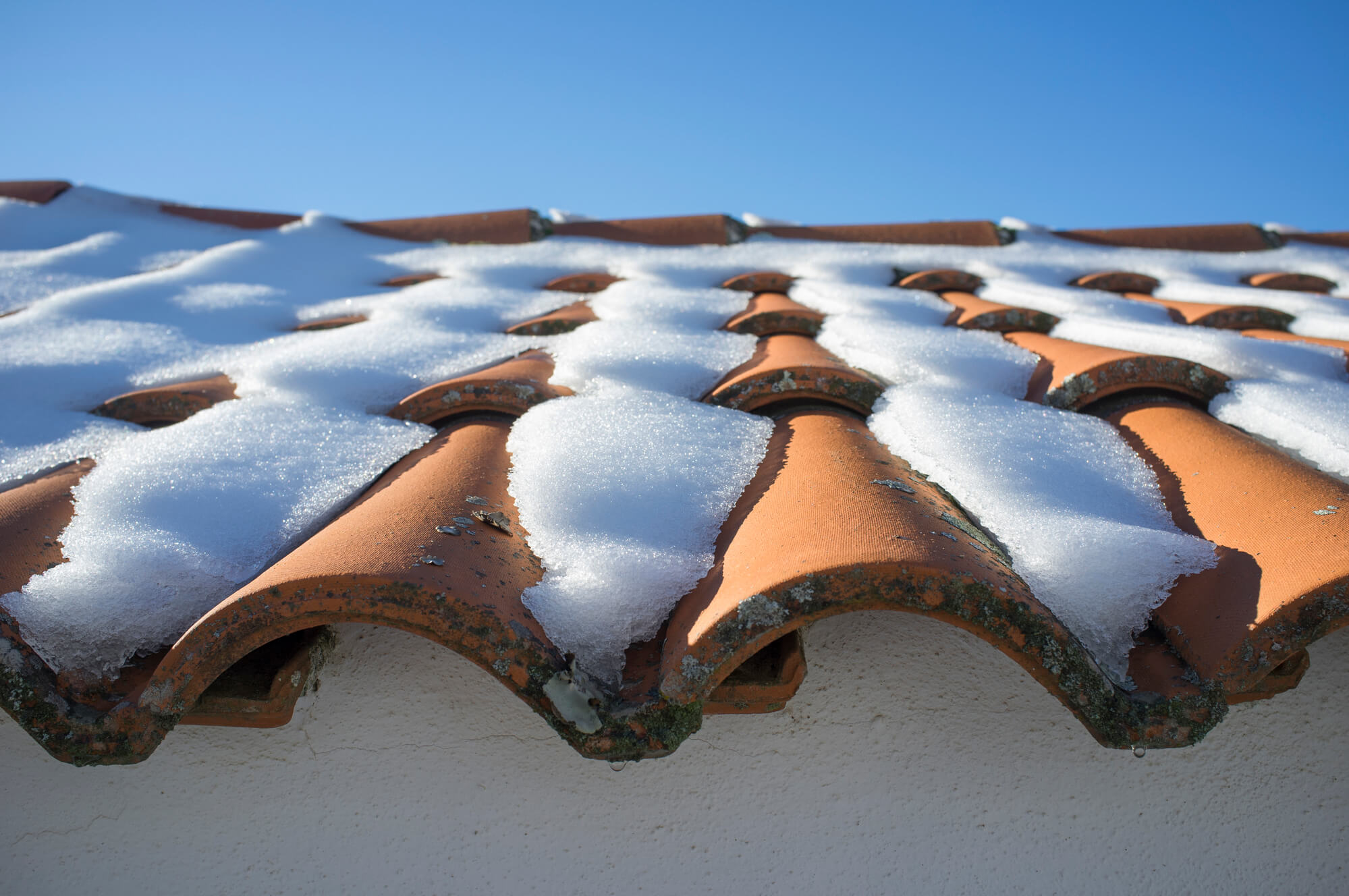December 31, 2025
Snow and Ice Management: Protecting Commercial Roofs and Building Exteriors from Winter Strain
Winter conditions like snow and ice create a very different operating environment for
Throughout the winter season, a silent threat to the structural integrity of commercial properties arises in the form of ice dams. Unfortunately, this combination of snowfall and heat loss from the interior of the building can lead to water infiltration, heightened energy costs, safety hazards, and damage to commercial roofing in Texas and other parts of the United States.
In the course of this blog, we will explore the damaging consequences of ice dams, as well as measures commercial property owners can adopt to prevent them. With this knowledge, you will be well-prepared to protect your investments from the challenges posed by these troublesome ice accumulations.

Ice dams start with the accumulation of snow on the commercial roof. When winter storms deposit layers of snow, the roof becomes covered. The thickness of this snowpack varies depending on local weather conditions and the shape of your roof.
Once heat escapes from your building's interior into the attic space, it rises and warms the roof's surface, causing the bottom layer of snow to melt. This melted snow water flows downward and reaches the roof's cooler eaves.
As the water moves toward the roof's edge, it finds the colder exterior temperatures, freezes, and forms an ice damn, a solid ice barrier that traps subsequent meltwater.
Ice dams can inflict substantial harm upon commercial roofs, which primarily manifests as water infiltration and the subsequent degradation of roof structures.
As dams stop snow from flowing off the roof, water gets underneath roofing materials, causing them to weaken and deteriorate over time. This issue can cause warping, rotting, and decay in materials like the roof sheathing, decking, and insulation.
If the integrity of the roof is compromised, the structure may necessitate expensive repairs or even premature replacement.
One of the most troublesome aspects of ice dams is their capacity to let water sneak into the inside areas of a commercial property. Since ice dams lead to snow accumulation, they force water to creep beneath roof shingles, get through walls, or make its way through vents and openings.
Such water intrusion, when not promptly mitigated, contributes to mold growth, compounds structural damage, and compromises the comfort and safety of the commercial building's occupants.
Ice dams have a less recognized yet substantial impact on the energy efficiency of commercial properties, as their interference with the natural drainage of melting snow exacerbates heat loss from the building's interior.
As the ice dams prevent the efficient runoff of melted snow, the heat from the inside escapes through the roof more readily. Intensified heat loss compels the heating system to work harder to maintain comfortable indoor temperatures, resulting in elevated energy consumption and increased energy bills.
The hidden cost, often unnoticed at first, can accumulate over time, exerting a notable strain on the financial bottom line of commercial property owners and portfolio managers.
In addition to the structural and financial implications, ice dams give rise to significant safety hazards. The sudden release of ice and snow from the roof's edge can happen without warning, posing substantial risks to occupants and representing potential liability concerns for property owners.
The danger lies in the unpredictability of these events, as falling ice and snow can cause injuries to anyone in the vicinity, damage vehicles or other property, and lead to legal liabilities.
As the ice accumulates and thaws, it may interact with electrical systems and components, such as overhead power lines, exterior lighting, and electrical conduits. Therefore, the commercial building may face electrical malfunctions, short circuits, and even power outages.
Electrical issues often disrupt business operations, compromise safety, and require costly repairs or replacements. Furthermore, the presence of ice dams can make it more challenging for maintenance personnel to access and service electrical systems, increasing the risk of accidents and injuries.
Finally, ice dams can create fire hazards within commercial properties. When ice dams form and trap water against roofing materials and insulation, it can lead to increased moisture levels in the building's attic or crawl spaces.
Elevated moisture levels can foster conditions conducive to mold growth and wood rot. In some cases, these damp environments can lead to electrical malfunctions, increasing the risk of electrical fires.
Additionally, ice dams obstruct the natural flow of water from melting snow, creating pooling on the roof or around the property's perimeter. This standing water can damage electrical systems, heating, ventilation, and air conditioning (HVAC) units, or other equipment, increasing the risk of electrical fires or equipment malfunctions.

Engaging professional ice dam removal services is often the safest and most efficient course of action. Specialists possess the expertise and equipment necessary to eliminate ice dams from your commercial property's roof. They employ specialized techniques, such as steam or hot water methods, to remove the ice without causing further damage to the roofing structure.
Before initiating ice dam removal, professionals conduct a comprehensive roof inspection and assessment. This initial step involves identifying the extent of the ice dam formation, evaluating potential damage, and assessing the overall condition of the roofing system.
A meticulous assessment informs the subsequent removal strategy, ensuring a tailored approach to address the specific needs of your commercial property.
Afterward, professionals utilize controlled ice dam removal techniques, emphasizing precision and safety. These methods involve the gradual removal of ice from the roof, taking into account the temperature and weather conditions.
The use of specialized equipment and tools, such as high-pressure steamers, ensures the careful disintegration of ice dams without causing unintended harm to the roofing materials.
Professional services extend beyond mere ice dam removal. They investigate the root causes of ice dam formation, addressing underlying issues to prevent future occurrences. Their proactive approach includes:
Through this comprehensive strategy, professionals ensure your commercial property is better equipped to resist ice dam formation in the future.
One of the fundamental steps in ice dam prevention is to bolster your commercial property's roof insulation. This entails improving the insulation within the roofing structure, focusing on areas where heat loss is prevalent.
By enhancing insulation, you reduce the potential for heat to escape from the interior spaces into the attic and roof, where it can initiate snowmelt. A proper insulation strategy emphasizes the passive enhancement of insulation, an essential step in mitigating heat transfer that leads to ice dams.
When professionals regulate temperature gradients within the attic, you can reduce the likelihood of ice dam formation. Adequate ventilation helps maintain consistent attic temperatures, minimizing the temperature differential that facilitates snowmelt and subsequent ice dam formation.
Professionals can evaluate and optimize your attic ventilation system to ensure it functions efficiently in mitigating this risk.
Diligent roof inspections and maintenance routines are fundamental in the fight against ice dams. Regular inspections enable early detection of potential vulnerabilities, such as damaged or deteriorating roofing materials.
Moreover, addressing roof issues as soon as possible can prevent ice dams from forming and causing more extensive damage. A robust maintenance regimen also includes snow and debris removal, particularly from roof valleys and gutters, to reduce the materials that contribute to ice dam development.
Strategic snow removal during conducive conditions is another critical component of ice dam prevention. Professionals employ roof rakes and other specialized equipment to remove excessive snow accumulation from the roof's surface.
By minimizing the snow load, you reduce the amount of melting snow available to contribute to ice dam formation. While it's important to remove excess snow, this should be done cautiously by professionals to avoid damaging the roofing materials.
Finally, the installation of heat trace cables is a proactive measure that can be highly effective in preventing ice dam formation on commercial property roofs. Heat trace cables, often referred to as roof or gutter de-icing cables, are designed to emit low-level heat to keep critical areas of the roof, such as eaves, valleys, and gutters, above freezing temperatures.
The controlled application of heat ensures snow and ice do not accumulate in these vulnerable areas, reducing the potential for ice dam formation.
Unsealed gaps, cracks, and inadequate insulation within the attic and walls can contribute to heat loss, which in turn fuels ice dam formation. When professionals conduct an energy audit and address these vulnerabilities, you can significantly reduce the likelihood of heat escaping into the attic space.
Professionals can identify and rectify air leakage points and bolster insulation, creating a more energy-efficient and ice dam-resistant building envelope.

If ice dams causing you concern for your commercial properties, Blue Team is here to help. With our specialized expertise in restoration, renovation, roofing, and water damage services, we are your trusted partner in safeguarding your investments.
Our professional team can assess your property's specific needs and implement effective solutions to combat ice dams and their associated risks. Contact us today to book a quote and discover how Blue Team can protect your commercial properties from the perils of ice dams.